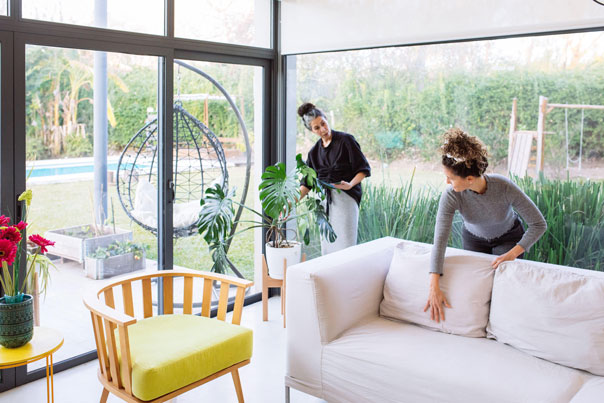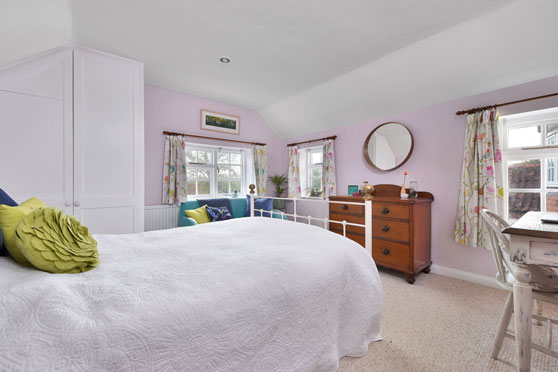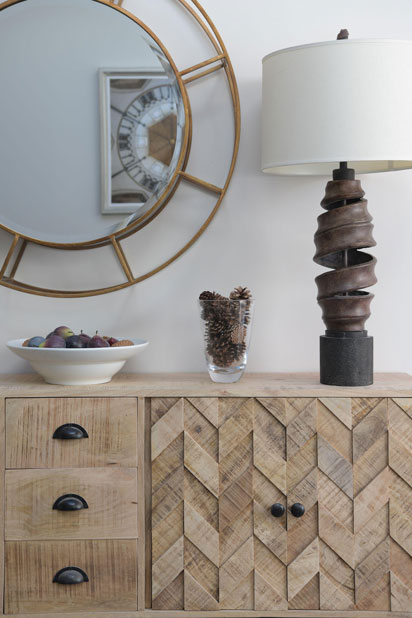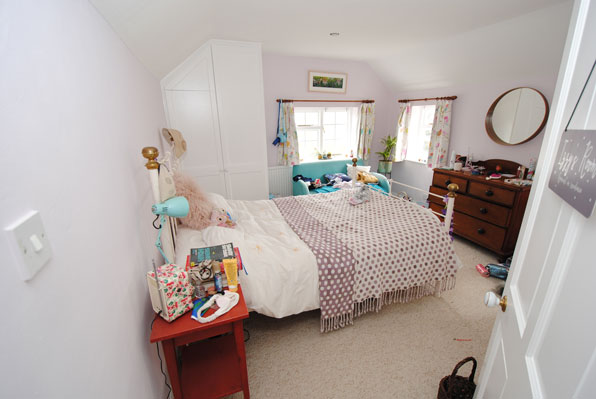Home staging can increase a property’s value by 10% and sell it three times faster. Lisa Salmon finds out more.
Selling your home quickly and for a high price is what every house seller hopes for. But aside from tidying up and sticking a ‘for sale’ sign in your front garden, what can you do to get the best possible quick and lucrative sale?
If you’re prepared to invest a bit of money to sell quickly – for a high price – home staging could be the answer.

Home staging – which started in the US in the early Seventies – involves enhancing a property’s best features to attract buyers.
“As much as homeowners want to sell their homes fast and at the best price, most of the time, very little it done to achieve that goal,” says Paloma Harrington, founder of the Home Staging Association UK & Ireland (HSA; homestaging.org.uk). She says homebuyers now spend more time looking at photos, videos, and floorplans before arranging viewings, so presentation is more important than ever.
“Staged properties get more viewings, stay less time on the market, and have better chances of receiving higher offers,” she says. “Staging a property is no longer a method for simply increasing offer value – it’s become a necessity for maintaining and even exceeding pricing expectations.”
But while the idea of hiring someone to stage your property might sound like a nice idea, is it really worth it? Elaine Penhaul, founder of home staging company Lemon & Lime Interiors (lemonandlimeinteriors.co.uk), says the cost of professional staging varies from roughly 0.5%-1.5% of the property guide price, depending on its size, value and what needs to be done.
The HSA’s 2019 Home Staging report estimated home staging costs can range from around £500 to more than £5,000, but found staging can increase a home’s value by up to 10%. In addition, 85% of estate agents reported that a staged home sells up to three times faster than a non-staged property.
Penhaul says home staging disregards the tastes of the property owner, basing the design of rooms on what will attract the widest target audience. “Home staging makes a home more appealing to a higher number of potential buyers, thereby selling a property more swiftly and for more money,” she explains. “On average, the occupied properties I’ve worked on sold four times faster after staging, and mostly above the asking price, so it’s in everyone’s best interests to stage before selling.”
Here, Penhaul outlines five basic principles of home staging…

1. Declutter and depersonalise
Decluttering is one of the most important steps when staging a home, stresses Penhaul. “Buyers are often expected to see past clutter, but this can drastically slow down the selling process and decrease the property’s value,” she explains. “By presenting the house as untidy and apparently uncared for, potential buyers will quickly assume it’s not well-maintained, which will be reflected in any offers.”
She says potential buyers want to be able to imagine their own possessions in a house they might buy, which is why it’s important to ‘depersonalise’ it as much as possible. “While selling a home can be an emotional process, depersonalising it can help a seller to start the process of ‘letting go’,” she says. “Tidying away children’s toys, ornaments, family photographs and portraits, plus any other collectables that might not suit another buyer’s taste, is an important start to the moving process.”

2. Ensure space is used well
Many houses contain ‘redundant’ spaces, such as second sitting rooms, spare bedrooms or cellars, explains Penhaul. “If a space is too big, it can often overwhelm buyers, so you should look to fill the space with the right sized furniture,” she advises, pointing out that home stagers would do this through furniture rental.
Sometimes, these ‘redundant’ rooms have been used as a dump for clutter, or boxes ahead of a planned move, says Penhaul. “This prevents viewers from seeing these rooms as another asset to their new home. A bedroom without a bed will appear smaller than it is. A box room used for ironing won’t feel as though it could possibly be an appealing home office. Ensuring every room has a function targeted to the buyer market will create a faster sale with higher offers,” she promises.
Plus, with more buyers looking for a property they can work from, it’s important to stage and showcase a room’s multiple purposes, stresses Penhaul. “Highlight selling points, such as close-away desk units inside cupboards, and ensure spaces are efficiently lit to bring light to rooms which lack natural light – this can really transform a room’s appeal.”

3. Spruce up the exterior
Unappealing exteriors can lose a sale before the buyer’s even set foot through the door, warns Penhaul, so it’s worthwhile giving your home’s exterior a facelift. New windows and doors look great but will cost thousands, so she suggests: “Rather than spending a fortune on refitting new frames and doors, spray your existing ones with a lick of paint, to give them a new lease of life, and possibly add up to £10,000 to your house value.”

4. Consider art rental
You may not have thought of this one, but renting some classy art as you try to sell your home could really pay dividends, says Penhaul. “Art makes a home more human. Breathing life into a room, it is more than just an aesthetic – it’s about evoking an emotion in the potential buyer – that’s what sells.”
She explains that art can be the guiding framework of a room, helping build the overall layout for placing furniture, maximising space and creating a focal colour scheme, which sets the ambience and feeling of a space. “Introduce art as a tool to make your home more appealing, taking shapes, colour and themes to guide the rest of your space, ensuring the entire home feels more cohesive,” she says.

5. Add internal panelling
Modern and traditional panelling techniques are increasingly popular among current buyers, says Penhaul, pointing out that for less than £100, it’s possible to create a desirable feature wall that gives off an expensive look and feel to potential buyers. “Formerly associated with luxurious and historic buildings, panelling adds an immediate value to your space, as it creates depth and interest when looking at plain and square rooms,” she explains.
